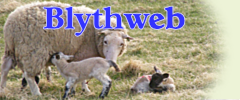Explore The Wenhaston Doom
The Wenhaston Doom is a 16th-century panel painting depicting the Last Day of Judgment. This rare work of art was discovered during restoration work in 1892, hidden under whitewash on the wooden tympanum taken down from above the chancel arch.
In its present position you see the Wenhaston Doom against the opposite wall on entering St.Peter's church. This remarkable painting would have originally been affixed at the Chancel Arch, between the chancel and nave, where the drama of its story would have been appreciated by the congregation. You can see the outline of where the three wooden figures of the Rood group were fixed (Christ between St.John and the Blessed Virgin Mary). Where the Rood, a wooden cross, was also fixed can also be seen. (Note the nail holes). This explains why the painted Christ, seated on a rainbow, is off-centre, although still above all other figures.
Nationally, other surviving Doom (or Day of Judgement) paintings of similar age, have been painted directly on to the walls at their church. This Doom however is notable because it is painted on to wooden boards. The fact that the Doom can be seen today is due to those boards being whitewashed over, as long ago as the mid 1500s. So the painting remained hidden to view for generations, and, most importantly, hidden from the attentions of the church despoilers of Cromwell's Commonwealth in 1644.
Wenhaston once had angels on the beams of the church roof, but these despised items, along with much else, were destroyed at this time.
One day in 1892, during church alterations, these boards were removed from the church and taken out to the churchyard. (Was there a plan to light a bonfire?). Imagine the astonishment when overnight rain revealed the glorious long-forgotten painting from under its covering.
Experts differ on the date the Doom was painted, by whom it was painted, and whether this involved one artist or more than one. It is understood that the added Bible text is Elizabethan and reads, in English, from Romans, chapter 13, verses 1-4. The text is separate from the Doom.
For sure we today are viewing a Doom painting which is about 500 years old. It is placed by most experts within the 'Top 10' of such paintings nationally, and even ranked by some at Number 1.
Postcards of the Doom are available at St.Peter's church where they may be purchased. Literature about the Doom is also in St.Peter's church. If you plan to come and see the Doom for yourself there is bed and breakfast and self catering accommodation in Wenhaston and surrounding area.
Some Favourite Websites For April 2025:
Walberswick Ferry – Offering river trips as well as special occassion bookings
Climb aboard the launch Daybreeze and follow the River Blyth towards Blythburgh through Walberswick Nature Reserve - an Area of Outstanding National Beauty.
George Borrow Trust – Explore about the well travelled 1800s poet George Borrow
The George Borrow Trust aims to advance the education of the public in the life and works of George Borrow in particular, by means which preserve, exhibit and study his writings and works and other material objects connected with or tending to perpetuate his memory or to throw light on his life and work.
Andy Seedhouse Boats – Andy Seedhouse Boats, Woodbridge - Boat Sales
A friendly and professional family-run business with an old-fashioned approach to customer service, located on the picturesque waterfront at Woodbridge on the River Deben. From dinghies and day boats to fishing boats and yachts, and even including liveaboard boats too, Andy brings his many years of experience in helping his customers buy and sell. Also chandlery, trailers, etc.
Waveney Wholesale – Suppliers of toys, novelties, giftware, china, housewares, pet items, beach goods and so much more
Established Halesworth-based suppliers with over 3000 lines stocked. On-line ordering or call and collect.
Stoneware Birds – Life-sized handmade and unique British birds, now available to buy online.
A charming unique gift or a treat for oneself. See the website to know how each one is made. Now available to buy online. Each bird is an individual creation, varying in choice from the perky wren to the plump bullfinch together with other well-loved British birds. Which will you choose?
